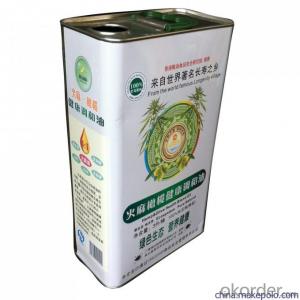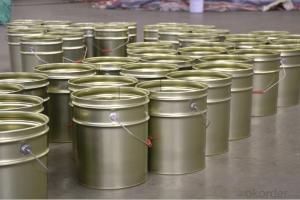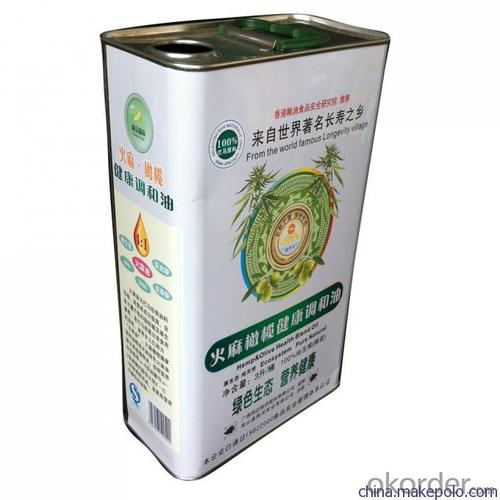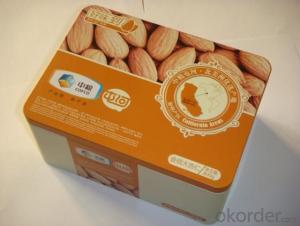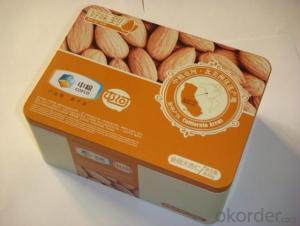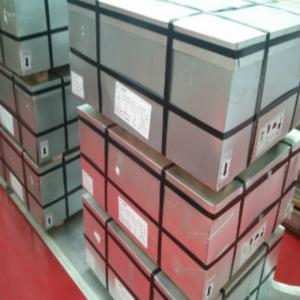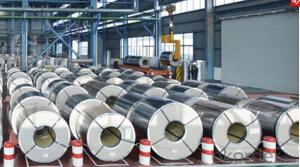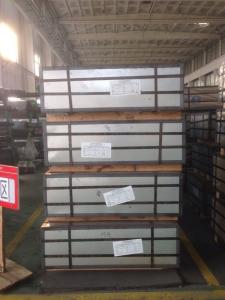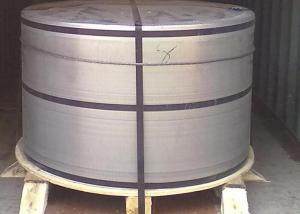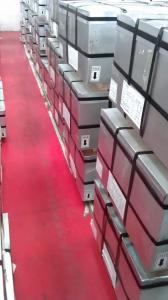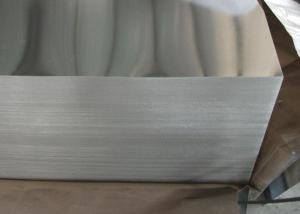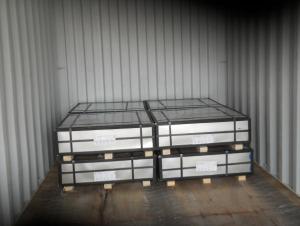MR Tinplate, Stone Finish, Food Oil Usage
- Loading Port:
- Tianjin
- Payment Terms:
- TT OR LC
- Min Order Qty:
- 25 m.t.
- Supply Capability:
- 40000 m.t./month
OKorder Service Pledge
OKorder Financial Service
You Might Also Like
1.Usage
Tinplate is widely used for making all types of containers, containing industrial usage such as paint can, oil can, aerosol cans etc., and food cans like milk powder cans, tomato paste can, dry food cans etc.
2. Quality
As a state owned company and a large tinplate supplier in China, our tinplate quality ranks 1st level in China, similar to Bao Steel, Posco etc.
3. Specification
standard: GB/T2520, JIS G3303, DIN EN10202
Material: MR /SPCC
Thickness available: 0.16-0.50MM
Width available: 600~1050MM
Temper grade: T1 – DR8
Tin coating: ordinary 2.8g/2.8g, 5.6g/5.6g and others
Package: sea worthy export package.
Applications: Tin can for chemicals & paint cans, industrial cans, food cans
4. Our factory photo & equipments

5. Our Markets:
now our tinplate has been sold to more than 50 countries, including Europe country, Gulf Area, South American, South Afric etc.
6. Our Overseas Wareouses:
Furthermore, in the year 2014, we have more than 10 overseas warehouses all over the word, located in KSA, UAE, Oman, Russia, Kuwait, Qatar, Oman, Chile, Brazil etc.
7. FAQ
a. what's the annual output?
about 500,000 tons per year.
b. where's the raw matrial from?
our hot rolled coil is purchased from Capital Steel and other state owned mill, with quite good quality.
c. how long is the delivery time?
normally for SPCC about 45~55 days, while 65~75 days for MR material
d. how to control the quality during production process?
inside our workshop, we have MES syestem. It realizes the optimization of the production procedure in the workshop. It could record each step of the whole production procedures, and if some problem appears, factory could easily found and take action, it’s quite helpful to monitor and control the quality.
- Q: What are the different types of tinplate containers available?
- There are several types of tinplate containers available, including cans, tins, drums, and pails. These containers can vary in size, shape, and design to suit different purposes and industries.
- Q: What are the environmental benefits of using tinplate?
- The environmental benefits of using tinplate include its high recyclability rate, reducing waste and the need for new raw materials. Tinplate also provides an effective barrier against oxygen and moisture, helping to extend the shelf life of products and reduce food waste. Additionally, tinplate is lightweight, making it more energy efficient to transport and reducing carbon emissions.
- Q: What are the common challenges faced in the production of tinplate?
- Some common challenges faced in the production of tinplate include ensuring consistent tin coating thickness, achieving uniform surface quality, preventing oxide formation on the tin surface, maintaining proper adhesion between tin and steel, controlling tinplate flatness, and managing the overall production cost.
- Q: What are the common packaging formats for tinplate?
- The common packaging formats for tinplate include cans, containers, and tins.
- Q: How does tinplate compare to other packaging materials in terms of cost?
- Tinplate is generally considered to be more expensive than other packaging materials such as aluminum or plastic. However, its durability, protective qualities, and recyclability make it a cost-effective choice in certain industries where the preservation of product quality is crucial, like food and beverages.
- Q: How is tinplate coated for corrosion resistance?
- Tinplate is coated for corrosion resistance through a process called electrolytic tinplating. During this process, a thin layer of tin is electroplated onto the surface of the tinplate, creating a protective barrier against corrosion.
- Q: Can tinplate packaging be used for chemical products?
- Yes, tinplate packaging can be used for chemical products. Tinplate is a durable and resistant material that can effectively protect chemical products from external factors such as corrosion, light, and moisture. It is commonly used in the packaging of various chemical products, including paints, solvents, and adhesives.
- Q: Are there any health concerns associated with tinplate?
- Yes, there are some health concerns associated with tinplate. Tinplate can potentially leach small amounts of tin into the food or beverage stored in it, especially if it comes into contact with acidic or high-salt content products. While tin is considered relatively safe, excessive consumption of tin can lead to gastrointestinal issues and long-term exposure may have adverse effects on health. It is recommended to limit the use of tinplate for storing or consuming highly acidic or salty foods.
- Q: How is tinplate coated for signage?
- Tinplate for signage is typically coated through a process called electroplating, where a thin layer of tin is deposited onto the surface of the metal. This coating provides protection against corrosion and enhances the aesthetic appeal of the signage.
- Q: What is the purpose of coating tinplate?
- The purpose of coating tinplate is to provide protection against corrosion and to enhance the appearance of the tinplate surface.
Send your message to us
MR Tinplate, Stone Finish, Food Oil Usage
- Loading Port:
- Tianjin
- Payment Terms:
- TT OR LC
- Min Order Qty:
- 25 m.t.
- Supply Capability:
- 40000 m.t./month
OKorder Service Pledge
OKorder Financial Service
Similar products
Hot products
Hot Searches
Related keywords
